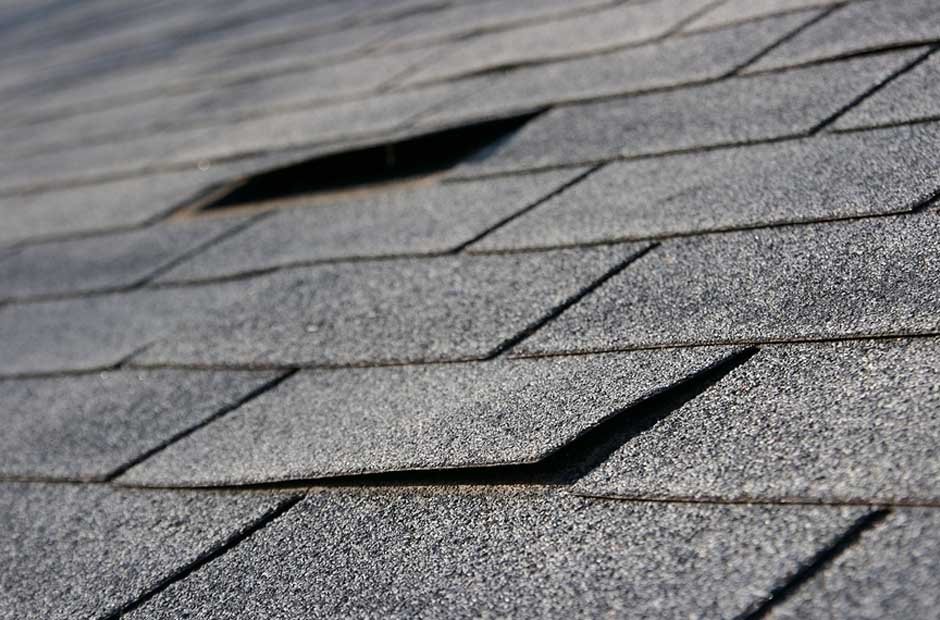Your roof is your home’s first line of defense against the elements, shielding you and your belongings from rain, snow, wind, and more. Nevertheless, over the period, roofs are subject to wear and tear, and various factors can usher to damage. We’ll delve into the most common roof damage issues that homeowners encounter. Comprehending these issues, their causes, effects, and potential solutions is paramount for maintaining the integrity of your roof and ensuring the long-term protection of your home.
Common roof issues faced by homeowners
1. Missing or Damaged Shingles:
Missing or damaged shingles are a prevalent issue for roofs and can result from various causes. Severe weather conditions, such as strong winds, hail, or storms, often play a role in dislodging or damaging shingles. Additionally, the natural aging process of roofing materials, exposure to harsh UV rays, and fluctuations in temperature can cause shingles to deteriorate over time. The effects of missing or damaged shingles are significant as they expose the underlying roof structure to the elements, creating a pathway for water infiltration. This increases the risk of leaks, water damage, and structural deterioration. Furthermore, compromised shingles can usher in reduced energy efficiency, causing higher heating and cooling costs. To address this issue, it’s essential to replace the missing or damaged shingles promptly, ensuring proper installation and maintenance to prevent future problems.
2. Roof Leaks:
Roof leaks are a pervasive and troublesome problem that can occur for various reasons. These issues often stem from damaged shingles, cracked flashing, deteriorated seals around roof penetrations like vents and chimneys, or improper roof installation. The consequences of roof leaks can be extensive, causing interior damage such as water stains on ceilings and walls, fostering the growth of mold and mildew, and compromising the structural integrity of your home. Additionally, roof leaks can result in higher energy bills as compromised insulation becomes less effective. Addressing roof leaks necessitates identifying and repairing the source of the issue promptly. This may involve replacing damaged shingles, resealing flashing, or fixing damaged seals. Regular roof inspections are critical to detecting and addressing leaks before they cause significant harm.
3. Ice Dams:
Ice dams are a common problem in regions with cold winters and heavy snowfall. These dams form when snow on the roof melts and then refreezes near the eaves, creating a barrier that traps melting snow. The primary cause of ice dams is inconsistent roof temperatures, typically due to inadequate attic insulation or ventilation. The consequences of ice dams can be detrimental, as they can lead to water infiltration, causing damage to the roof structure, insulation, and the interior of the home. Additionally, ice dams can contribute to walkway ice growth, posing safety hazards. To prevent ice dams, homeowners should improve attic insulation and ventilation. Clearing snow from the roof after a snowfall can also help reduce the risk of ice dams forming.
4. Flashing Damage:
Roof flashing, typically made of metal, is crucial for sealing vulnerable areas such as roof penetrations, valleys, and chimneys. However, flashing can deteriorate due to exposure to the elements, corrosion, or improper installation. Damaged flashing can compromise the integrity of your roof and allow water to infiltrate your home, leading to leaks and structural damage. It’s a common source of roof-related problems. To address flashing damage, it is essential to replace the damaged flashing promptly and ensure proper installation techniques. Regular inspections can help detect flashing issues early, preventing more extensive damage to your roof and home.
5. Clogged Gutters and Downspouts:
Clogged gutters and downspouts are often the result of the accumulation of leaves, debris, twigs, and other materials. This blockage prevents proper water drainage from the roof, ushering potential issues. Clogged gutters can cause water to overflow, potentially damaging the roof, siding, and foundation of your home, warns Granite Foundation Repair expert. It can also contribute to the formation of ice dams in cold climates. To stem clogged gutters and downspouts, regular cleaning and maintenance are essential. Installing gutter guards can help reduce debris buildup, ensuring that rainwater flows freely from your roof and away from your home, preventing potential damage.
6. Sagging Roof:
A sagging roof can be a concerning issue and may result from various factors. The weight of accumulated snow or ice, poor construction practices, inadequate support structures, or structural damage can all contribute to a sagging roof. The consequences of a sagging roof are severe, compromising the safety and stability of your home. Immediate attention and action are required to address this issue. Fixing a sagging roof often involves structural repairs carried out by professionals. Identifying and rectifying the underlying cause is essential to restore the structural integrity of your roof and ensure your home’s safety.
Understanding the most common roof damage issues, their causes, effects, and potential solutions is crucial for homeowners. Regular roof maintenance, inspections, and prompt repairs can help prevent many of these common problems and extend the life of your roof. Addressing issues early can also save you time and money while ensuring the continued protection of your home and your peace of mind. For Sydney roof repairs that you can trust, it’s essential to consult with experienced professionals who understand the unique challenges of the local climate and can ensure the longevity and durability of your roofing system.


